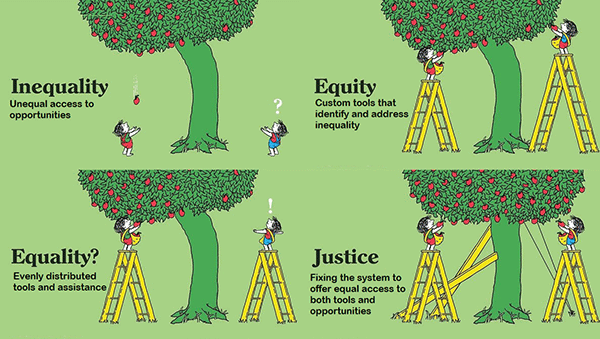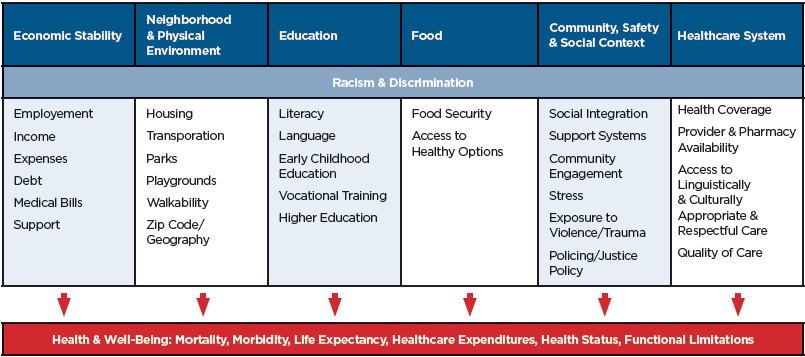Health equity is the attainment of the highest level of health for all people, where everyone has a fair and just opportunity to achieve their optimal health regardless of race, ethnicity, disability, sexual orientation, gender identity, socioeconomic status, geography, preferred language or other factors that affect access to care and health outcomes.
The Differences Between Equity, Equality and Justice

Social structures differently impact people from different groups such as (but not limited to) people of different races, ethnicities, socioeconomic status and disabilities. Though the terms equity and equality sound similar—and are often used interchangeably—the differences between them matter a lot. Inequality occurs when resources are offered to only certain groups.
Equity occurs when differences among individuals and communities are considered to create customized tools that ensure that everyone has the same access to needed resources.
In contrast, equality divides resources into the same amount for everyone, but does not acknowledge the differences between and needs of the people who use those resources. Justice fixes the social structures in place so they are equitable for everyone.
Social Determinants of Health: The Factors that Impact Health
According to the Centers for Disease Control and Prevention (CDC), Social Determinants of Health, sometimes called SDOH, are “the nonmedical factors that influence health outcomes. They are the conditions in which people are born, grow, work, live and age, and the wider set of forces and systems shaping the conditions of daily life. These forces and systems include economic policies and systems, development agendas, social norms, social policies, racism, climate change, and political systems.”1
Identifying the social determinants of health impacting the health outcomes of our communities and the diverse groups within them is important to achieving health equity and in improving the nation’s overall health and economic prosperity.
Social and Economic Inequity and Health Disparities
When individuals or groups of individuals do not have equitable access to social determinants of health that promote the best health outcomes, health disparities occur. The National Conference of State Legislatures defines health disparities as “inequities in the quality of health, health care and health outcomes experienced by groups based on social, racial, ethnic, economic and environmental characteristics.”2 Figure 1 below illustrates how social, economic and health-related inequities can impact the overall health and well-being of an individual or community.
Figure 1. Social and Economic Inequities Drive Health Disparities3

The RWJBarnabas Health Vision to Create Healthier Communities
Our RWJBarnabas Health vision is to create and sustain healthy communities, together. To achieve this vision for our organization and the communities we serve, our RWJBarnabas Health mission includes a clinical component and a social component that address both the health and social requirements of health equity. These components work together to help RWJBarnabas Health serve more underserved areas than any other health system in New Jersey. Read on to learn about some of the Health Equity work being done across the system. Together, we will continue our work to bring equitable care to all New Jerseyans.
Social Mission
Improve the health of all New Jerseyans by strategically working to foster health-promoting environments and conditions across the key social determinants of health.
Clinical Mission
As the leading academic health system in New Jersey, we are advancing innovative strategies in high-quality patient care, education and research to address the clinical and social determinants of health.
- Social Determinants of Health. (2022, December 8). Centers for Disease Control and Prevention. Retrieved July 17, 2023, from the CDC
- Health Disparities Overview. (2023, July 10). Retrieved July 17, 2023, from the NCSL
- Disparities in Health and Healthcare: 5 key questions and answers. (2023, May 24). KFF. Retrieved July 17, 2023, from the KFF
For more information view Health Equity.